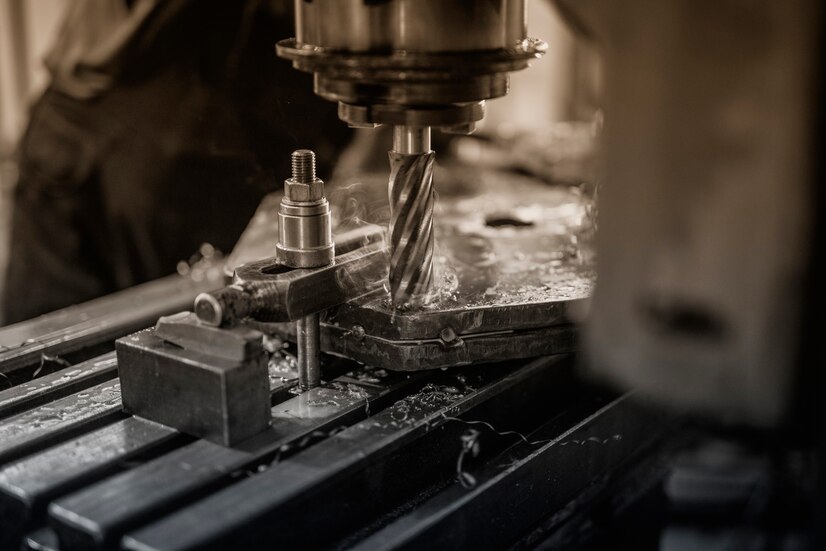High-pressure die casting (HPDC), a cornerstone of metalworking, reigns supreme in the realm of shaping intricate and precise metal parts. From the intricate components within your smartphone to the robust engine blocks powering your car, HPDC plays a vital role in manufacturing countless objects around us. But what exactly makes this process so special? Let’s delve into the fascinating world of HPDC, exploring its core principles, advantages, and applications.
The Essence of High Pressure:
HPDC builds upon the fundamental principles of die casting. Here’s a breakdown of the key stages which mold manufacturer China are following:
- Mold Preparation: The heart of HPDC lies in the die itself. This robust steel mold, typically consisting of two halves (fixed and moving), is meticulously crafted to define the final shape of the cast part. The mold cavity is precisely machined, and the surfaces are often polished and treated with special coatings to ensure smooth part ejection and a high-quality surface finish.
- Melting the Metal: The chosen metal alloy, often aluminum, magnesium, zinc, or copper alloys, is melted in a furnace at a precisely controlled temperature. Maintaining the correct temperature is crucial for optimal fluidity and successful casting.
- High-Pressure Injection: This is where the “high pressure” aspect comes into play to make the Die casting China. The molten metal is injected into the mold cavity at extremely high pressure (often exceeding 100 MPa or 14,500 psi). This high pressure ensures complete filling of the cavity, minimizing air pockets (porosity) within the cast part and achieving sharp details. Imagine a powerful syringe injecting the molten metal into the intricate mold cavity with immense force.
- Solidification: Once the cavity is filled, the metal rapidly cools and solidifies within the mold. Due to the high thermal conductivity of metals, solidification in HPDC is much faster compared to plastic injection molding.
Mold Opening and Ejection: After sufficient solidification, the mold opens, and ejector pins strategically placed within the mold push the cast part out.
Trimming and Finishing: The ejected part might still have a thin remnant of metal attached, stemming from the sprue and runner system that delivered the molten metal. This excess material is typically trimmed off using secondary processes. Depending on the application, the part might undergo additional finishing steps like deburring (removing sharp edges), machining for tighter tolerances, or surface treatments (painting, plating).
Repetition: The beauty of HPDC lies in its cyclical nature. Once the part is ejected and any finishing touches are completed, the mold closes again, and molten metal is injected for the next casting cycle. This rapid and automated process allows for high-volume production of identical parts.
Advantages of High-Pressure Die Casting:
- High Production Rates: HPDC excels at producing large quantities of identical parts quickly and efficiently. The automation of the process, coupled with relatively short cycle times, makes it ideal for mass production.
- Near-Net-Shape Parts: HPDC delivers parts with a high degree of dimensional accuracy and intricate details. This minimizes the need for extensive post-processing compared to subtractive manufacturing techniques like machining.
- Material Versatility: A wide range of metal alloys can be used in HPDC, each offering unique properties like strength, weight, weight savings, corrosion resistance, or electrical conductivity. This allows for tailoring the parts to meet the specific needs of the application.
- Good Surface Finish: HPDC can achieve good surface finishes, which can be further enhanced by polishing or plating processes.
- Strength and Durability: Many die-cast alloys offer excellent strength and durability, making them suitable for demanding applications.
Applications of High-Pressure Die Casting:
The versatility and efficiency of HPDC make it a popular choice for a wide range of applications across various industries, including:
- Automotive: Engine components (blocks, cylinder heads, pistons), wheels, transmission housings
- Consumer Electronics: Laptop and smartphone housings, heat sinks, brackets
- Industrial Equipment: Power tools, machine components, pumps, valves
- Aerospace: Landing gear components, structural parts
- Furniture: Chair bases, hardware
Conclusion:
High-pressure die casting stands as a remarkable metalworking process, offering a powerful and efficient method for producing high volumes of precise and complex metal parts. From the intricate components within everyday devices to the robust structures supporting our infrastructure, HPDC continues to shape the world around us. As advancements in mold-making technology and automation continue, we can expect even more innovative and functional metal parts to be born.
Also Read:-


